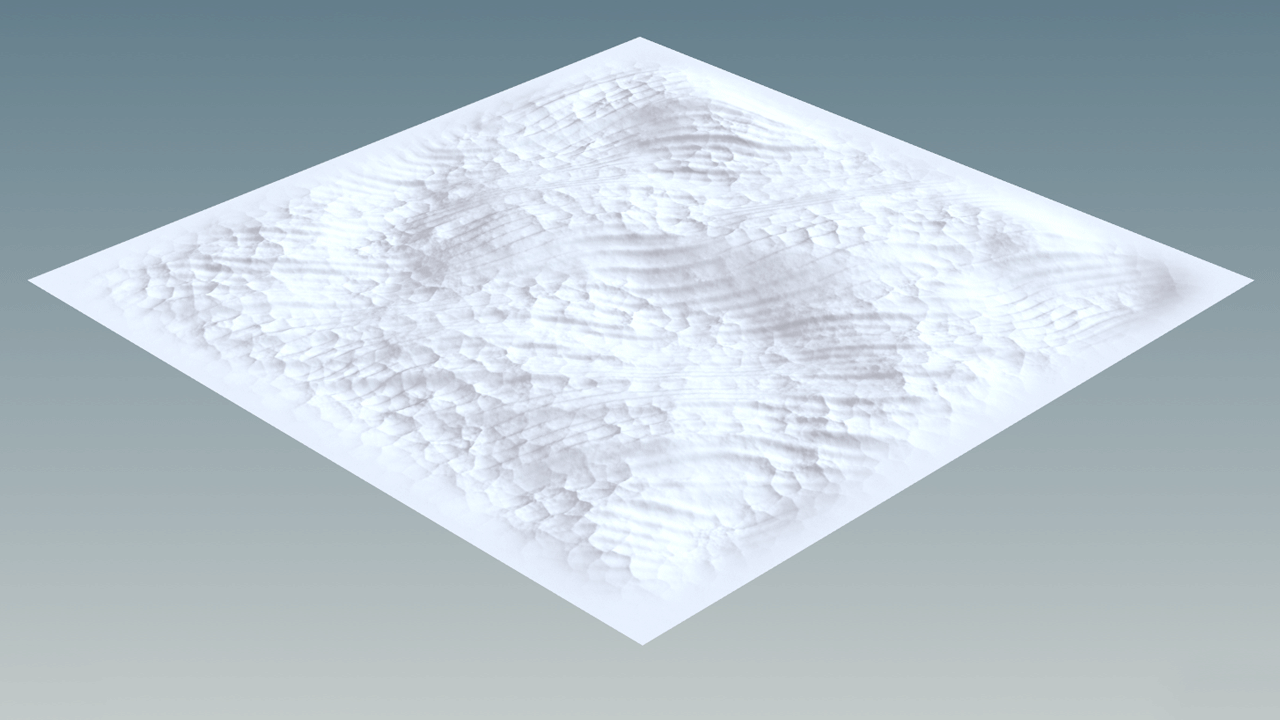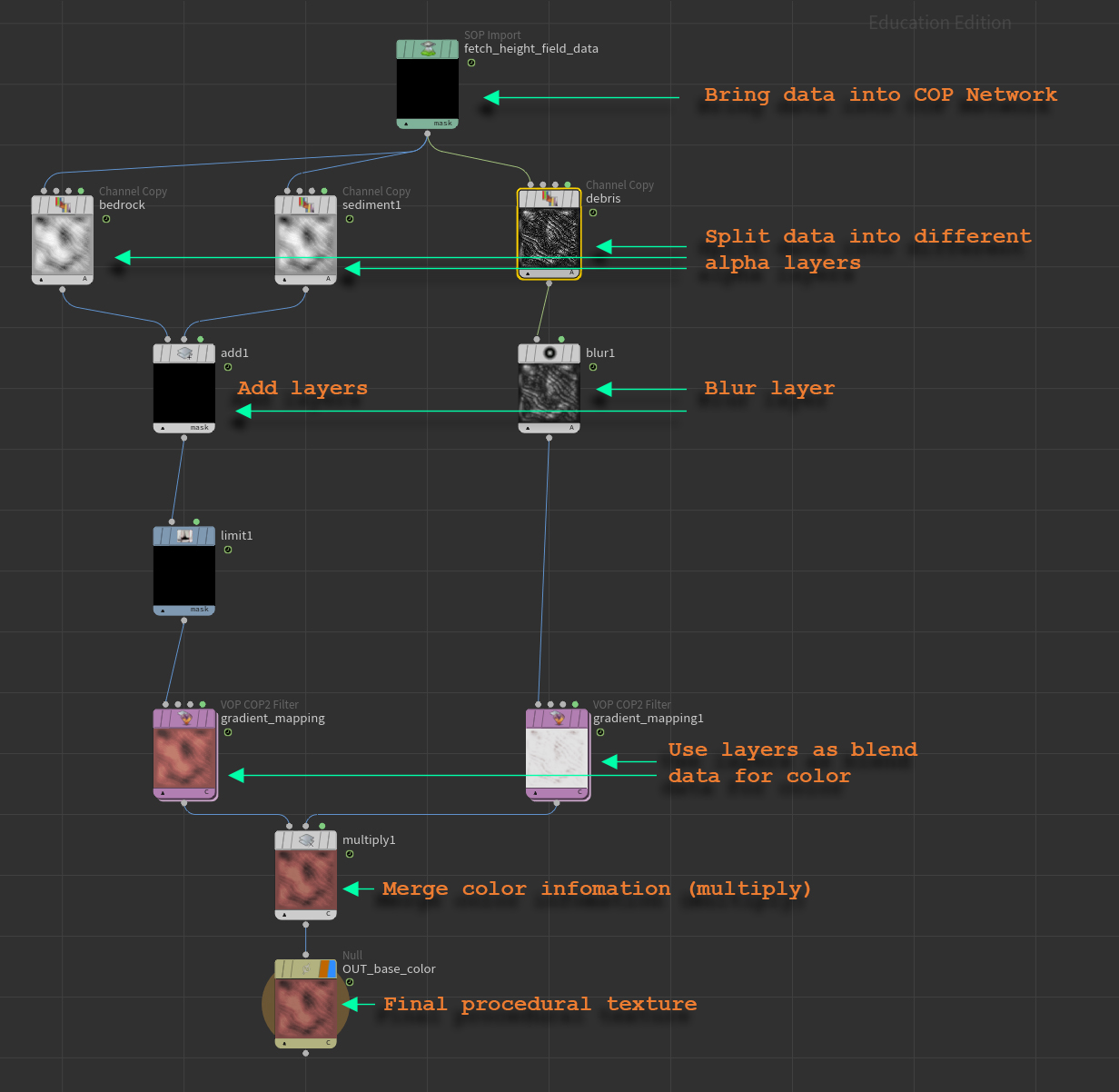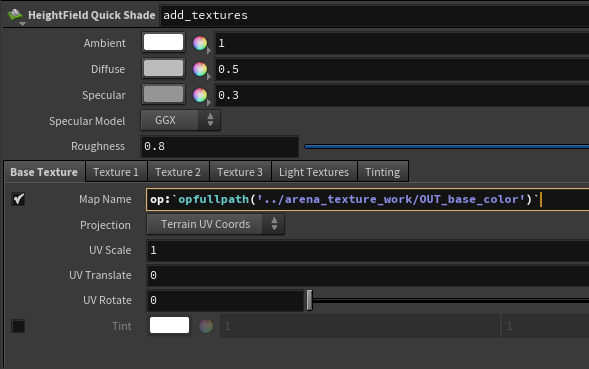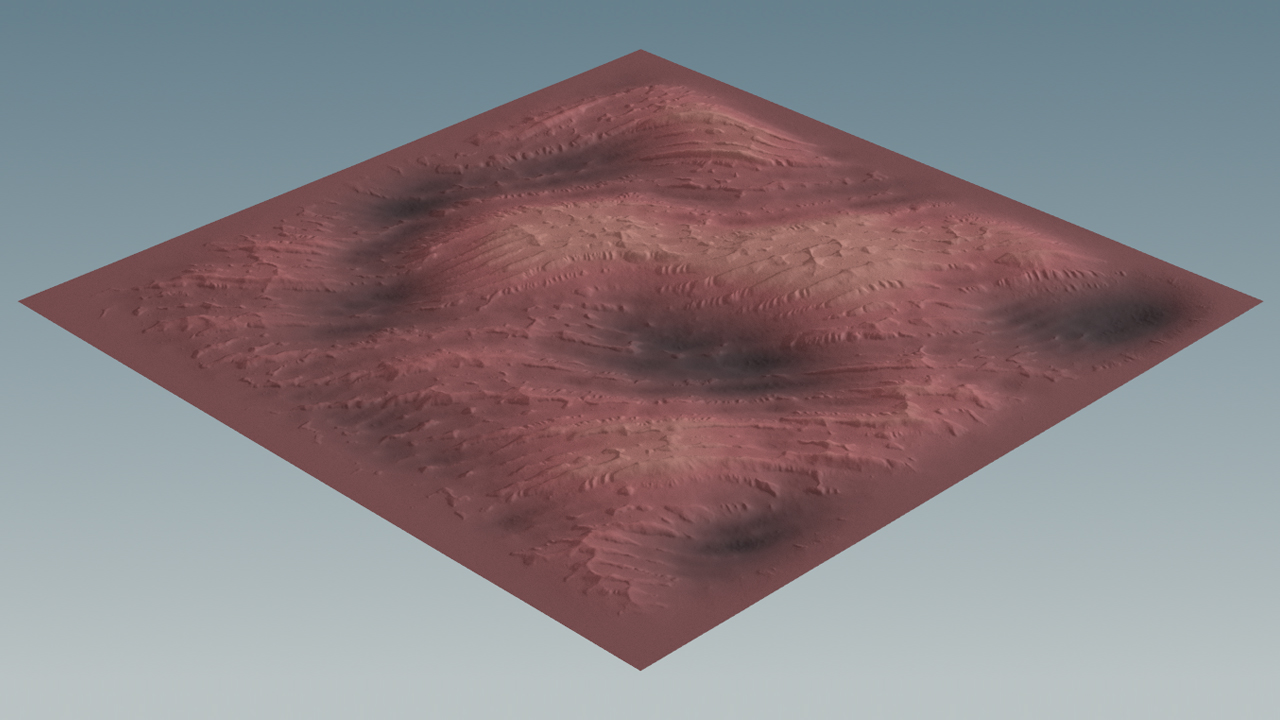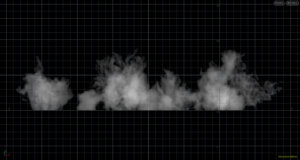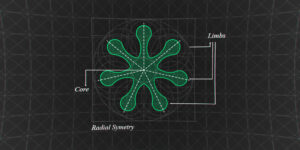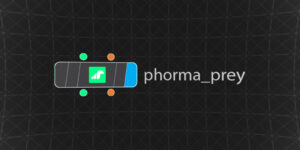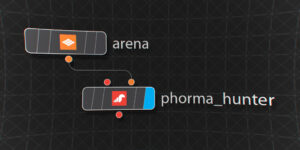The creature system includes a habitat on which they can be placed. In the original proposal, this habitat was pitched as Arena. A name that will continue to be used throughout this development. This system will be packaged in its own HDA. It will then be possible to feed its data to the creatures for them to stand and walk on it.
The development of its look has been loosely based on satellite imagery from Earth deserts as well as Mars landscapes.
Reference Images from Earth and Mars
Arena needed to be large enough to accommodate the creature’s locomotion. Due to the computational costs of polygons, the environment had to be developed using an alternative. In this case, Houdini’s native terrain generator, Height Fields. This system is very light to calculate while permitting a lot of detail.
This environment was achieved by applying noises and patterns to the surface stacked together. The edges were masked for possible future integration with extensions if actual shots get to be developed. The last step applied was a slight custom erosion to enhance the realism of the surface.
Before and After Erosion
An additional advantage that working with Height Fields brings is the possibility to extract terrain data for shading. This allows the generation of texture maps that match the features of the topography. These features can be brought into a COPs Network where the textures can be developed and art directed
A Breakdown of the COP Network Work
To be able to apply the custom texture work back to the terrain, a Height Field Quick Shade SOP is used. Since the data we want to use is not an external texture map, but rather live data, a workaround is needed, luckily Houdini provides a solution through the “op:” syntax in its parameter channels. Normally when using “op:”, Houdini expects an absolute path, but since this system is being developed within an HDA, a relative path is needed. Fortunately, relative paths can be converted to absolute paths by the use of the function opfullpath().
This terrain then gets fed into the creature’s HDAs where it gets internally processed for feet planting and locomotion.
This concludes this simple update regarding the Arena environment of this thesis.

